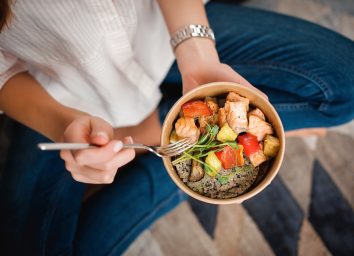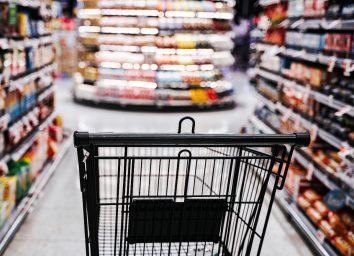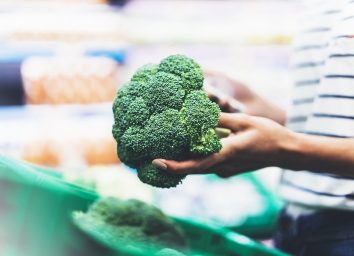Follow These Two Steps to Sanitize Your Kitchen, Expert Says
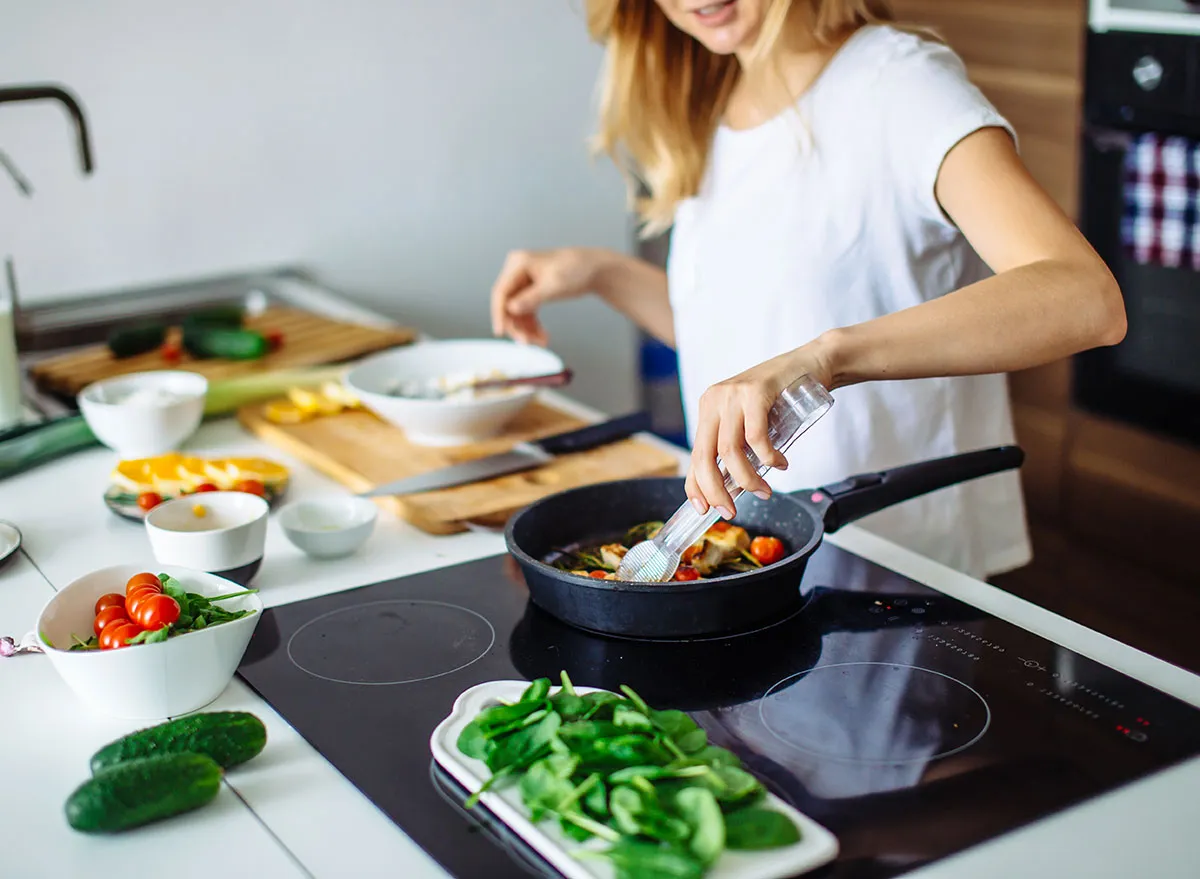
Simply put, food carries germs. This is especially true with fresh foods like fruits and vegetables, and raw meats, fish, chicken, and eggs.
In order to minimize the risk of foodborne illness, it’s important that you start prepping on a clean and sanitized surface and when you’re finished cooking you clean and sanitize the surfaces and equipment used once again.
For more on how to stay safe, are The 7 Healthiest Foods to Eat Right Now.
First, what germs lurk in food?
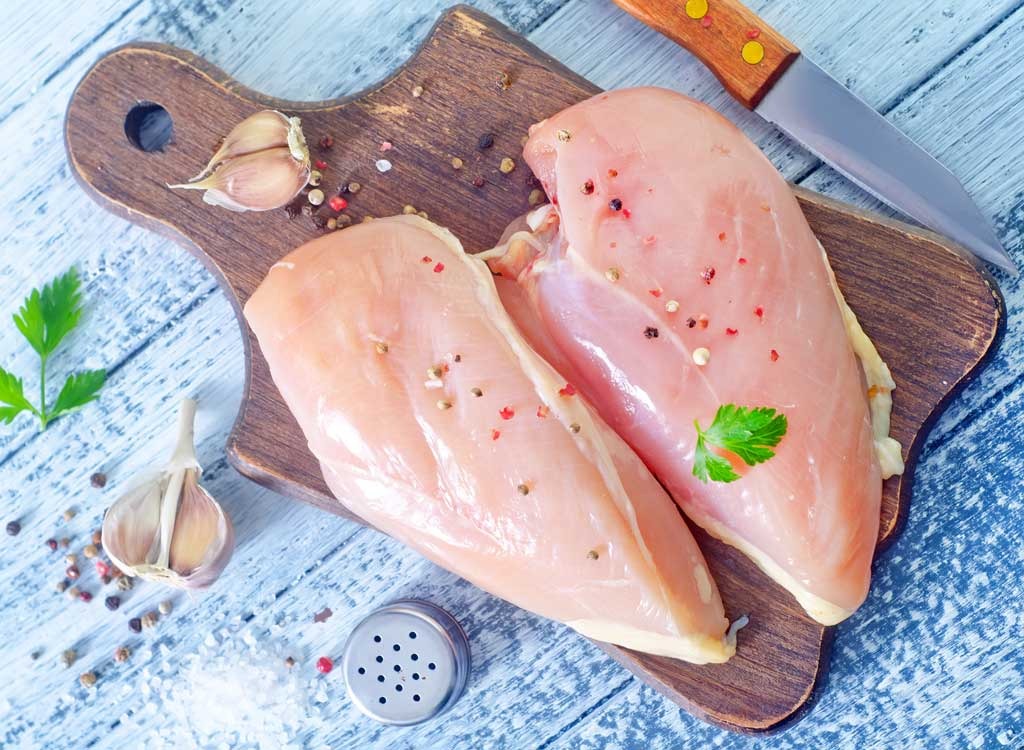
Bacteria that can potentially make you and your family sick if you don’t handle your food properly include Salmonella in raw eggs and poultry, E. coli in undercooked ground beef, and Listeria Monocytogenes commonly found in unpasteurized milk and cheese, deli meats, and hot dogs.
But there are many more pathogenic microorganisms that lurk in your kitchen, and the best way to get rid of them is to clean and then sanitize surfaces, equipment, and your hands after cooking.
Below you’ll find out how you can properly sanitize your kitchen against harmful germs.
Related: To get all the latest grocery news delivered right to your email inbox every day, sign up for our newsletter!
It’s a two-step process.
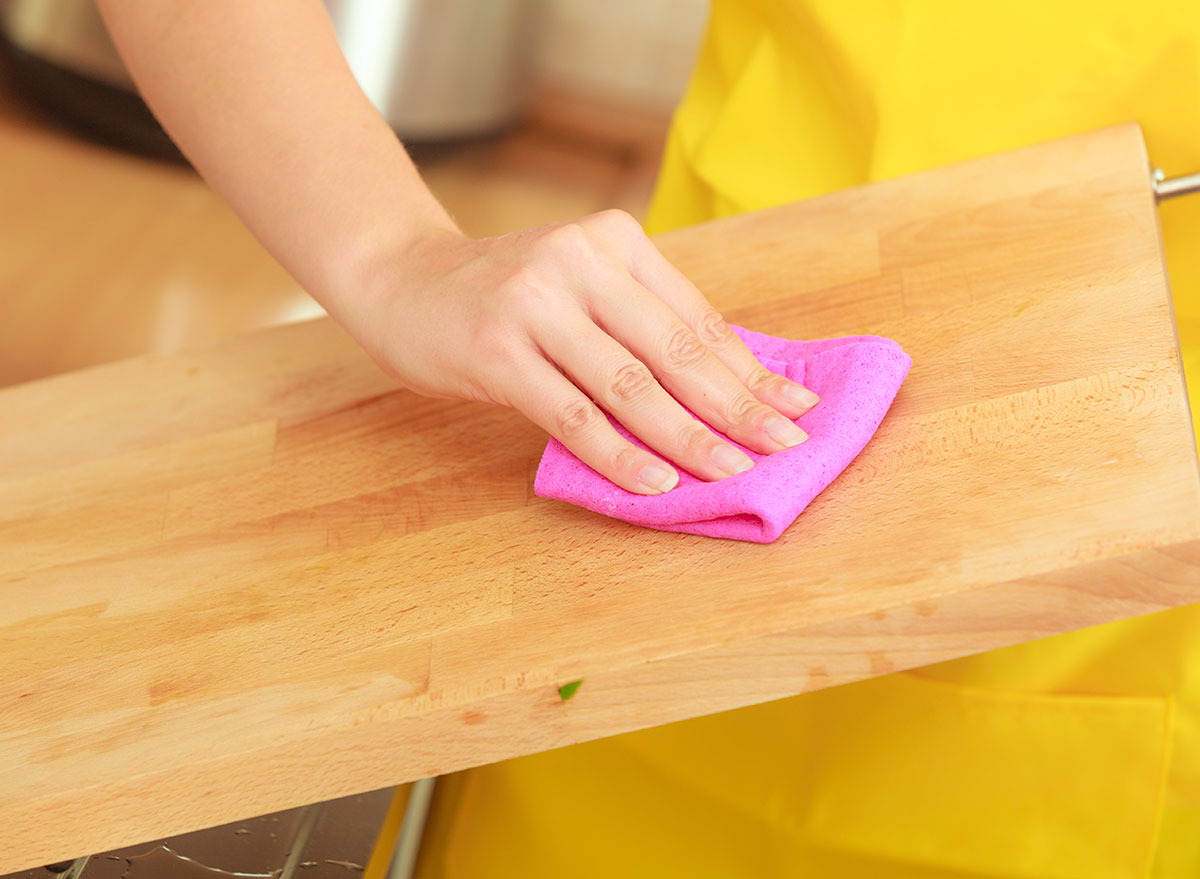
In 2019, the U.S. Department of Agriculture (USDA) released its two-step process for minimizing germs in your kitchen. This includes cleaning and then sanitizing—in that specific order.
Step 1: Clean
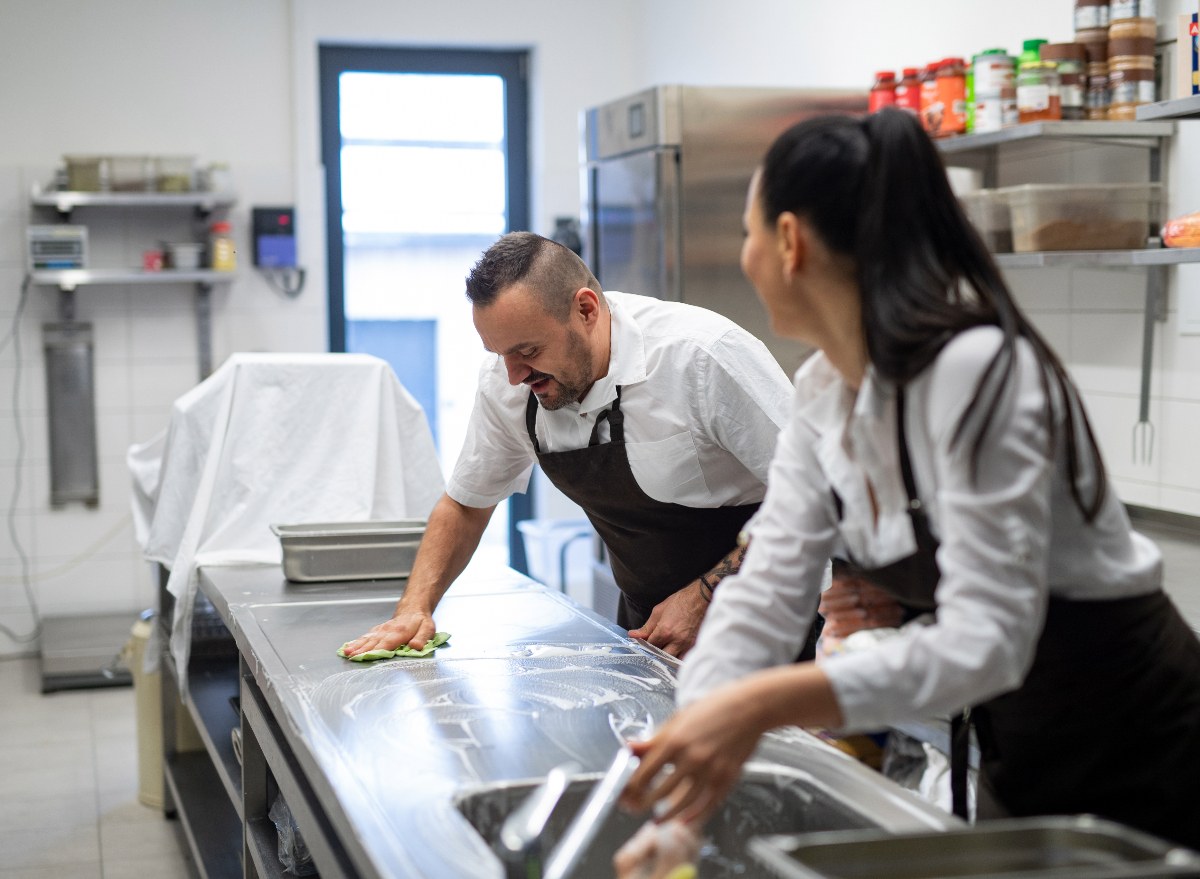
Cleaning is an important first step that removes visible dirt and bacteria that may cause you and your family to become sick. Pathogenic bacteria can remain on kitchen surfaces for a long time. For example, Salmonella can last up to 32 hours! By following step one and cleaning, it is physically removing dirt, grime, and some bacteria from your kitchen surfaces. However, it doesn’t kill these bacteria.
The USDA recommends using warm, soapy water to clean kitchen surfaces and your kitchen sink. After you wash those areas, wipe them with a clean, disposable (single-use) paper towel. If you are using kitchen towels for cleaning in your kitchen, then make sure that the towel is only used for cleaning and no other task. In addition, that cleaning towel should be washed frequently in the hot cycle of a washing machine.
Lastly, don’t forget to wash your hands with soap and warm water. Lather your hands together for at least 20 seconds, or as long as it takes to sing the song “Happy Birthday” twice.
Step 2: Sanitize
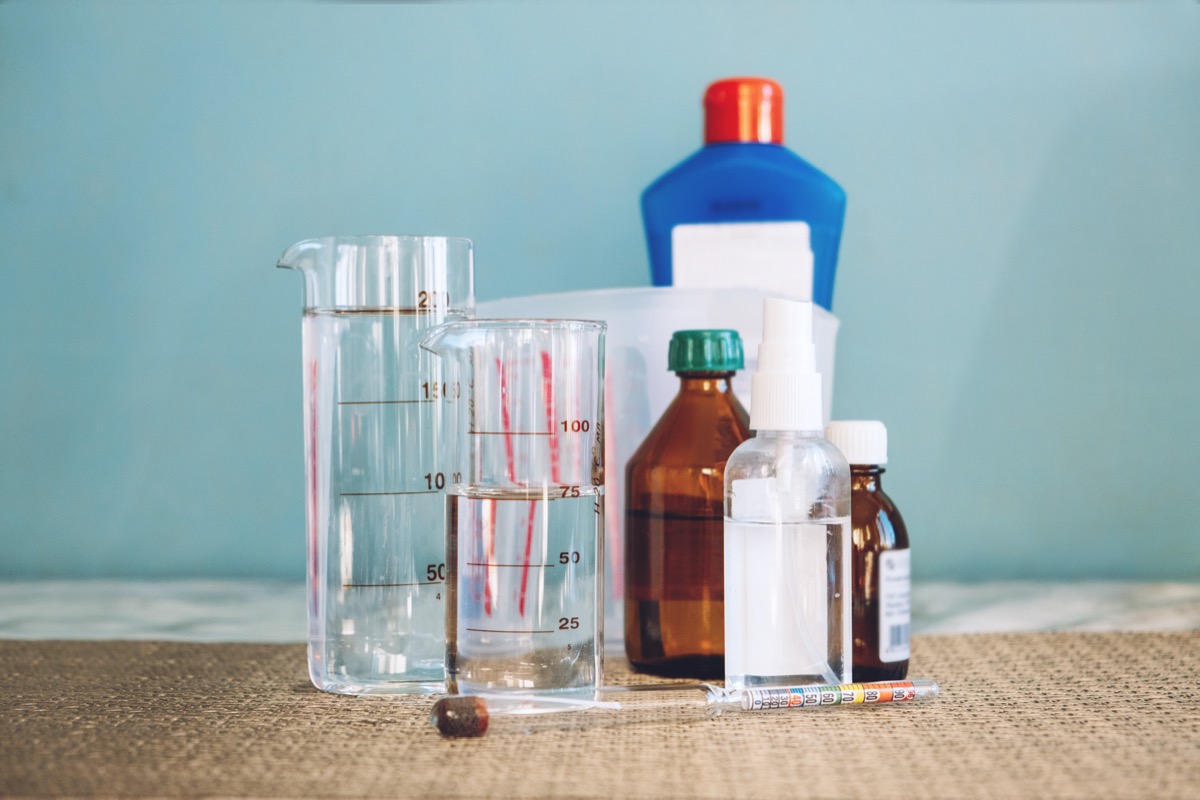
After you clean, then it’s time to kill any remaining bacteria. Sanitizing is most effective only after you have cleaned the surface.
There are numerous sanitizers you can use at home. These include a homemade sanitizer mix of 1 tablespoon of liquid chlorine bleach per gallon of water, or a commercial sanitizer or sanitizing wipe.
To use your sanitizer, pour or spray it on surfaces and wipe clean with a paper towel. Make sure that it’s completely dry before using those surfaces or sink again. When using commercial sanitizer, follow the manufacturer’s instructions that are on the label. Some commercial sanitizers instruct you to rinse the surface after using the sanitizer on it.
What about the dishwasher?
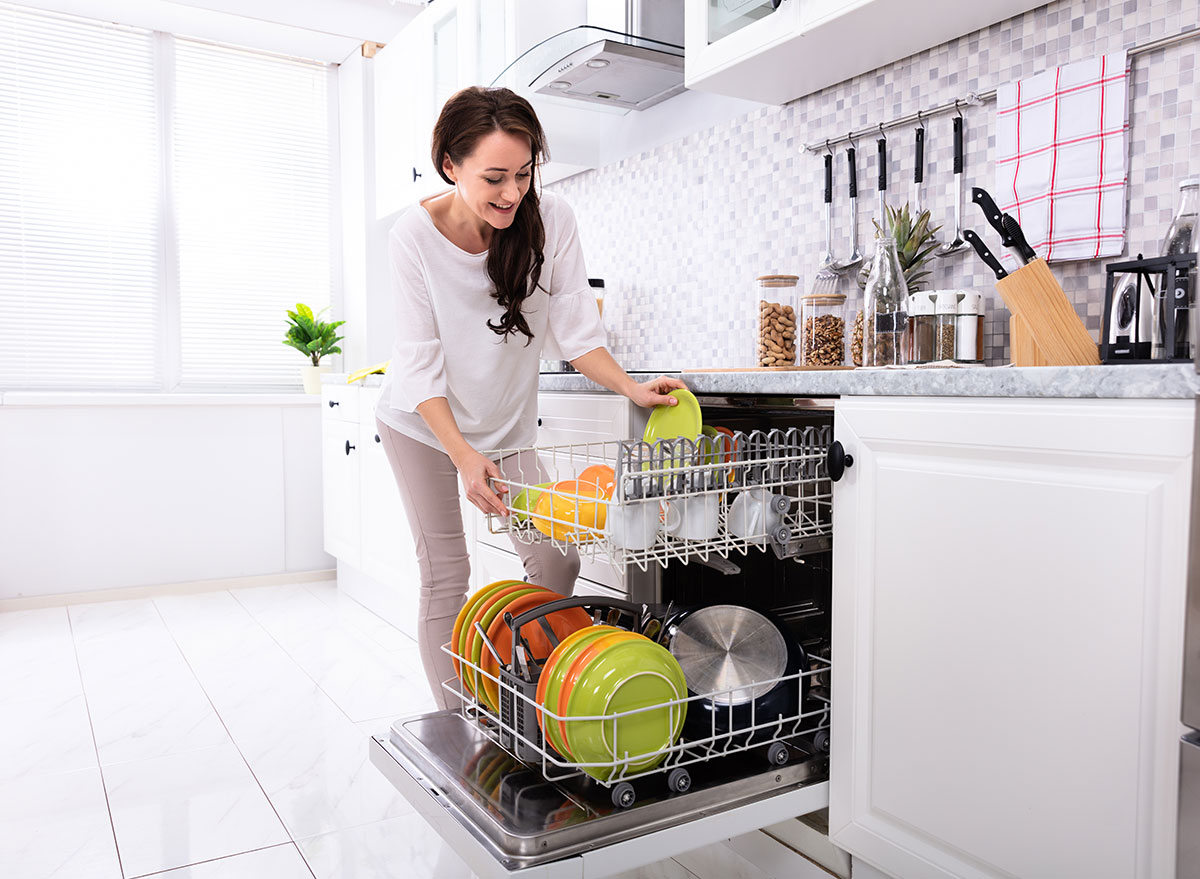
If you have a dishwasher, it can do the work for you! It can be used to clean and sanitize your utensils and cutting boards if they’re made from materials that are dishwasher safe (like acrylic, plastic, glass).
But if you don’t have a dishwasher, then use soapy water to wash them and then use the homemade sanitizing solution listed above. Utensils can be soaked in sanitizing solution, while you can pour some sanitizing solution on cutting boards. Allow the dishes or cutting board to stand a few minutes in the sanitizing solution before rinsing it off with water. Always air dry your dishes or dry them with a single-use paper towel.
For more on food safety, here are ‘Healthy’ Foods That Are Actually Dangerous, According to Dietitians.
